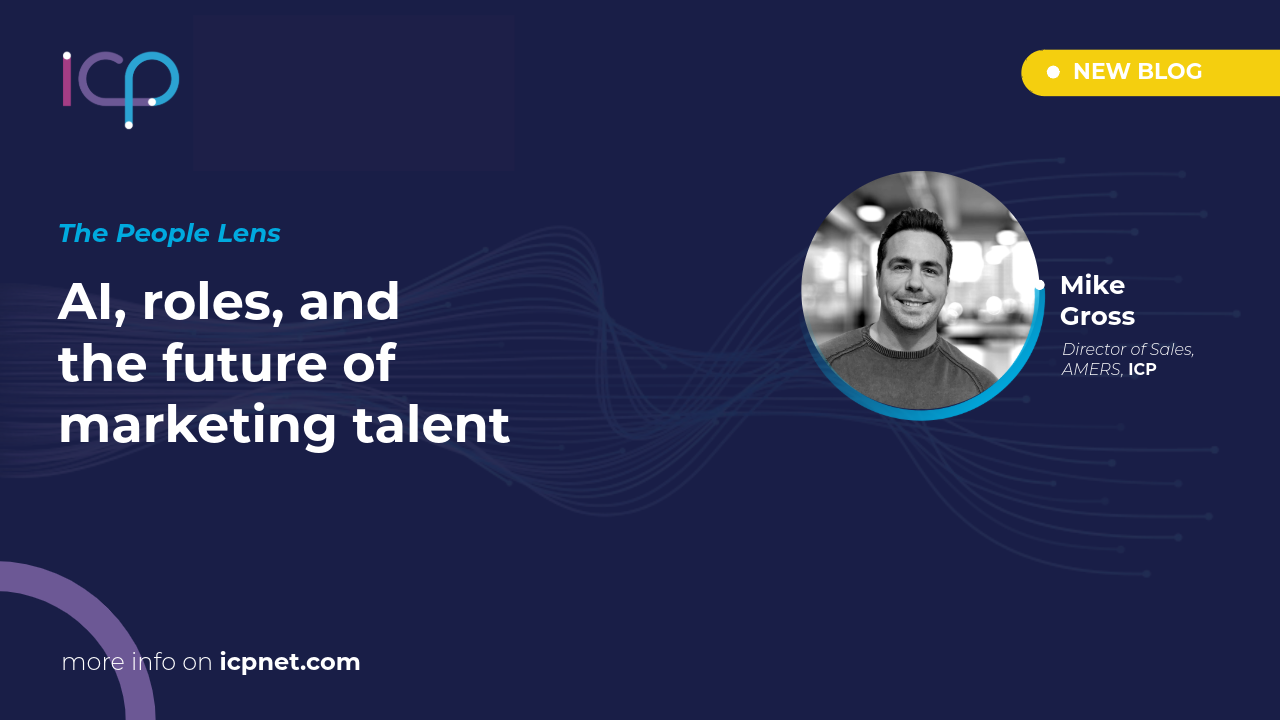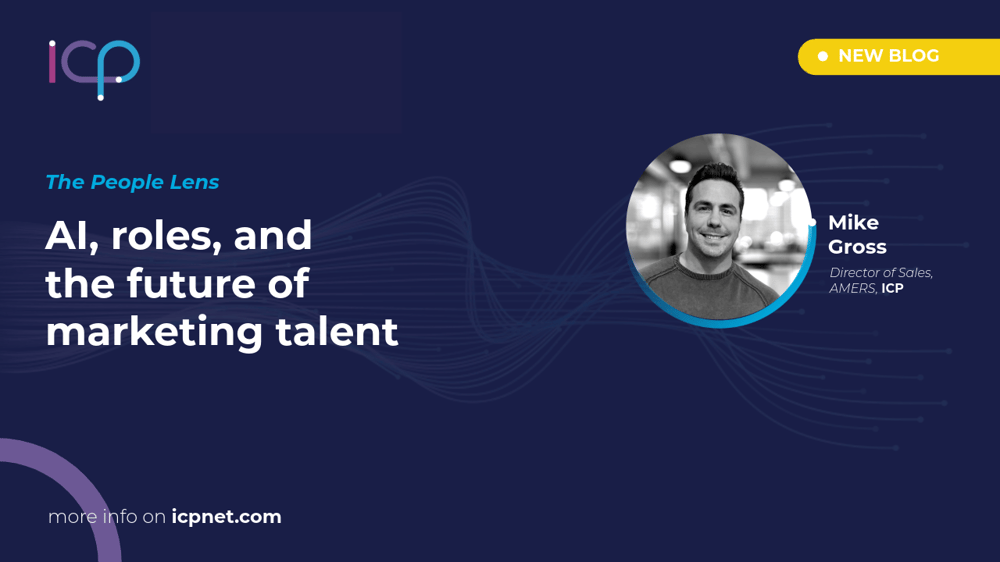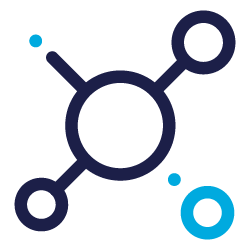

The People Lens: AI, roles, and the future of marketing talent
Every wave of automation brings the same question: will people still be needed?
In digital marketing, that question is louder than ever. AI is already handling tasks that once consumed hours auto-tagging assets, routing workflows, even generating campaign variations. But this isn’t a story about replacement. It’s a story about transformation.
Just as other industries have evolved by blending functions; think DevOps in software, RevOps in go-to-market, and FinOps in cloud management, Marketing is on the brink of a similar shift. These models created new cycles of speed, accountability, and continuous improvement by tearing down silos and embedding automation.
AI is enabling the same transformation in DAM, where automation takes on repetitive, high-volume tasks (tagging, enrichment, routing, distribution), and people step into higher-value work (strategy, governance, innovation, creative excellence).
The opportunity is not just efficiency. It’s to fundamentally redesign the operating model, becoming the engine room of scalable, personalised marketing.
From repetition to reinvention
Roles like digital librarians, traffic managers, and content coordinators aren’t disappearing. They’re shifting. Instead of spending hours uploading files and applying metadata, they’re creating even greater value in a strategic way.
- Overseeing AI outputs for accuracy and compliance.
- Designing governance models to ensure assets are used ethically and consistently.
- Advising on optimisation opportunities that AI can’t contextualise, brand nuance, cultural sensitivity, creative direction.
In short: they’re moving from handlers of content to enablers of value.
What training really looks like
For this shift to succeed, organisations must invest in structured upskilling. The most effective programmes combine three elements:
- AI awareness and literacy
Training teams in prompt writing, model strengths and weaknesses, and the ethical use of AI in creative and operational contexts. - Workflow-embedded practice
Embedding AI into day-to-day DAM processes auto-tagging, dynamic versioning, routing approvals, and letting teams experiment hands-on with real campaigns. - Scenario-based application
Giving staff live business problems to solve with AI like, “How would you use AI to optimise a product launch campaign across five markets?”
A cultural shift that is reinforced with practical application is needed to truly embed this change for organisations.
The opportunity to diversify
AI won’t just change existing roles; it will create new ones. We’re already seeing this demand:
- AI Asset Curators – professionals who validate AI-tagged assets and maintain quality.
- Prompt Engineers– crafting effective prompts that drive creative quality and accuracy.
- Data Governance Specialists – ensuring asset data complies with regulatory and brand standards.
- AI Workflow Architects – integrating tools across DAM, logistics, and marketing platforms.
These aren’t hypothetical. They’re emerging in leading organisations already, just as new roles have emerged from earlier technology shifts.
Why this matters for marketers
Marketers thrive on creativity and connection, not on repetitive admin. AI allows us to speed up production while doubling down on innovation, bringing more campaigns to market faster, testing more variations, and spending more time understanding customer needs
Companies that invest in retraining and diversification won’t just keep their teams relevant, they’ll unlock competitive advantage by ensuring talent and technology evolve together.
The takeaway
AI won’t replace marketers, it will reshape them. The future of DAM and marketing logistics is not fewer people, but smarter, more strategically focused teams. And just as DevOps redefined technology, AIOps for Marketing will redefine how creative and operational talent powers the next era of growth.
This is the second part in our three-part series leading up to Henry Stewart DAM New York 2025, exploring how technology, people and customer outcomes shape the future of marketing operations. Click here to read: The Business Lens: Why cost-optimised marketing starts with smarter systems.

.png?length=800&name=Untitled-4-CrOps%20Maturity%20Assessment%20landing%20page%20graphic%20(1).png)


%E2%80%8B-%E2%80%8B%20%E2%80%8B.png?length=256&name=Purple%20B__Align%20(Content%20Alignment)%E2%80%8B-%E2%80%8B%20%E2%80%8B.png)
%E2%80%8B-%E2%80%8B%20%E2%80%8B-1.png?length=256&name=__Align%20(Content%20Alignment)%E2%80%8B-%E2%80%8B%20%E2%80%8B-1.png)
%E2%80%8B%20%E2%80%8B.png?length=256&name=Blue%20B__Implement-%20(Technology%20Implementation)%E2%80%8B%20%E2%80%8B.png)
%E2%80%8B%20%E2%80%8B.png?length=256&name=__Implement-%20(Technology%20Implementation)%E2%80%8B%20%E2%80%8B.png)
%E2%80%8B.png?length=256&name=Blue%20B__Adopt-%20(Technology%20Adoption)%E2%80%8B.png)
%E2%80%8B.png?length=256&name=__Adopt-%20(Technology%20Adoption)%E2%80%8B.png)





%E2%80%8B-%E2%80%8B%20%E2%80%8B.png?length=256&name=__Align%20(Content%20Alignment)%E2%80%8B-%E2%80%8B%20%E2%80%8B.png)





%E2%80%8B-%E2%80%8B%20%E2%80%8B.png?length=256&name=Blue%20B__Align%20(Content%20Alignment)%E2%80%8B-%E2%80%8B%20%E2%80%8B.png)
%E2%80%8B%20%E2%80%8B.png?length=256&name=Cyan%20B__Implement-%20(Technology%20Implementation)%E2%80%8B%20%E2%80%8B.png)
.png?length=256&name=Blue%20B__Activate%20(Content%20Activation).png)
.png?length=256&name=__Activate%20(Content%20Activation).png)

.png?length=256&name=Data_%20Outcome_White%20BG%20(1).png)









